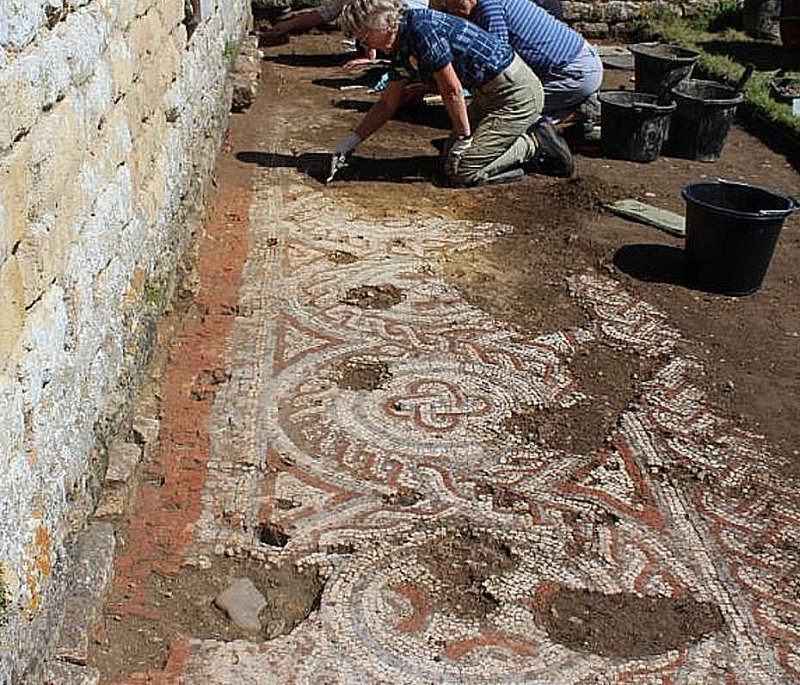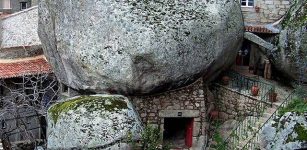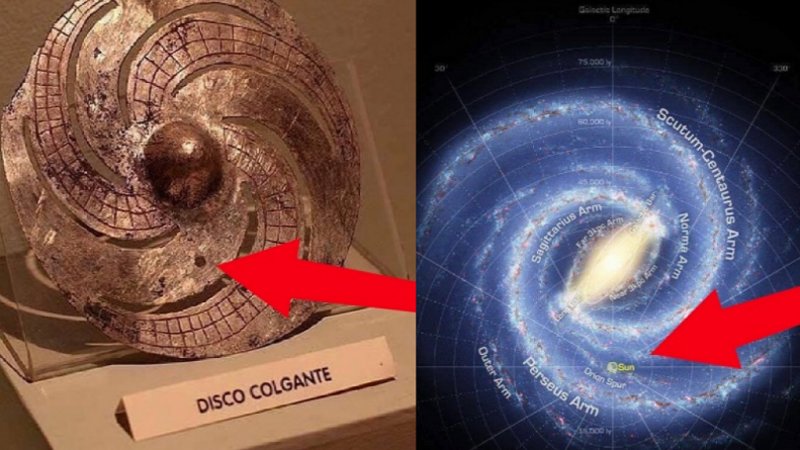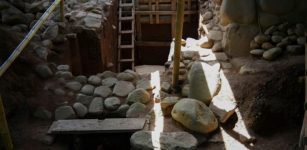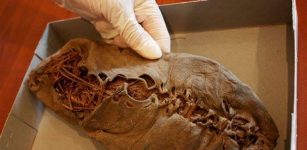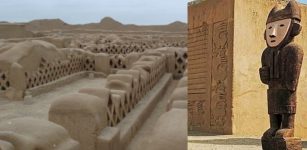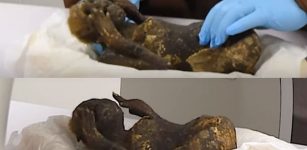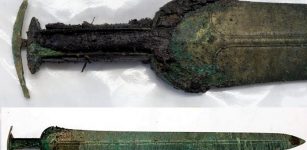First 5th Century Mosaic Found Near Cirencester Once The Second-Largest Roman-British Town In England
Conny Waters – MessageToEagle.com – For the first time, the fifth-century mosaic has been discovered at Chedworth Roman Villa near Cirencester that was the second-largest Roman-British town in England at the end of the 4th century.
The fifth-century Roman mosaic discovered near Cirencester, which was the second-largest Romano-British town in England. source
Cirencester’s recorded history began soon after the invasion of Britain by Emperor Claudius in AD 43. In the following years the victorious army over-ran the West Country. In order to link up with the forces fighting further north, a road known as the Fosse Way was constructed about AD 47 linking the Exeter area with Lincoln passing through the Cotswolds.
Cirencester was selected for one of the forts for the military, especially the cavalry; it is believed that up to 800 cavalrymen and their logistical support were housed here. Tombstones of two auxiliary cavalrymen have been found in Watermoor, Cirencester.
In Roman references, the name for Cirencester was Corinium Dobunnorum, and it is believed to have been associated with the ancient British tribe of the Dobunni, who had not opposed the Roman newcomers. The earliest known reference to the town was by Ptolemy in AD 150.
Later, about AD 75, a town was established, replacing the military fort as the chief city and administrative center for the Dobunni. Their tribal center was formerly at Bagendon, about four miles north of Cirencester, where some earthworks survive today.
Archaeological excavations have been ongoing at the site since 2010 and among the finds are coin-mints and many pre-Roman artifacts.
However, the radiocarbon dating process on the mosaic has only just been completed. But radiocarbon dating shows the mosaic was made after that, which suggests sophisticated life continued inside the luxury estate decades after – into the Dark Ages, the experts said.
It was previously believed that all Roman towns and villas fell into decay after Britain ceased to be part of the Roman Empire.
“I am still reeling from the shock of this dating. There are very late Roman mosaics in the area…but none has ever been suspected to be this late,” Stephen Cosh told Sky News.
Cosh has written about all of Britain’s known Roman mosaics, and he considers this particular discovery as very important.
“It will be important to research further sites in the region to see whether we can demonstrate a similar refurbishment at other villas which continued to be occupied in the fifth century.”
See also: More Archaeology News
The mosaic was found in room 28 of the 35-room villa with an intricate design of circles, flowers, and knots. According to experts from the National Trust, the wall beside it could not have been built until after 424 AD – with the mosaic added following that.
Other mosaics have been found at the villa, but none of them were constructed as recently as the new discovery. However, the quality of this one is poorer, with several mistakes in the design, they added.
Written by Conny Waters – MessageToEagle.com – AncientPages.com Staff Writer

